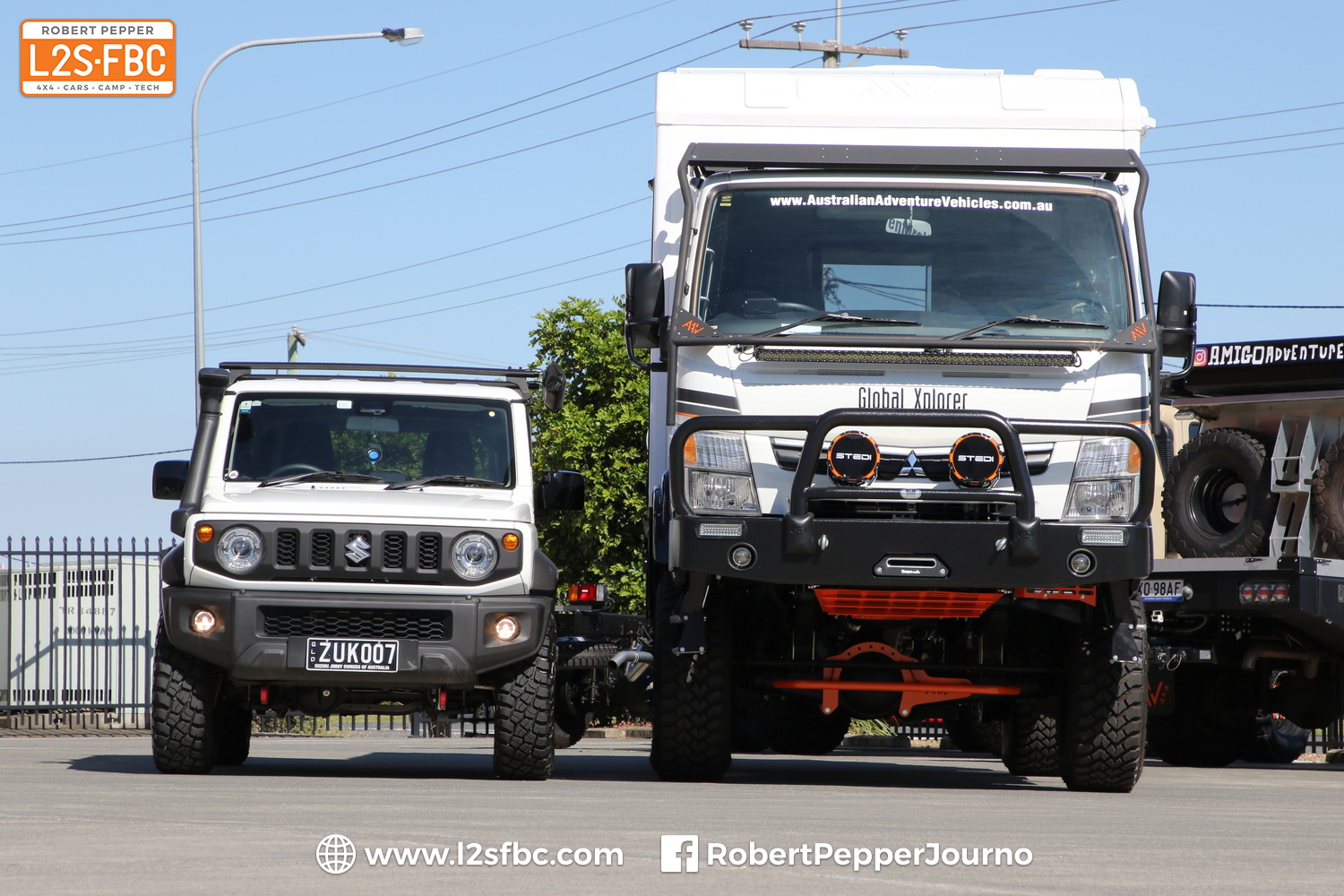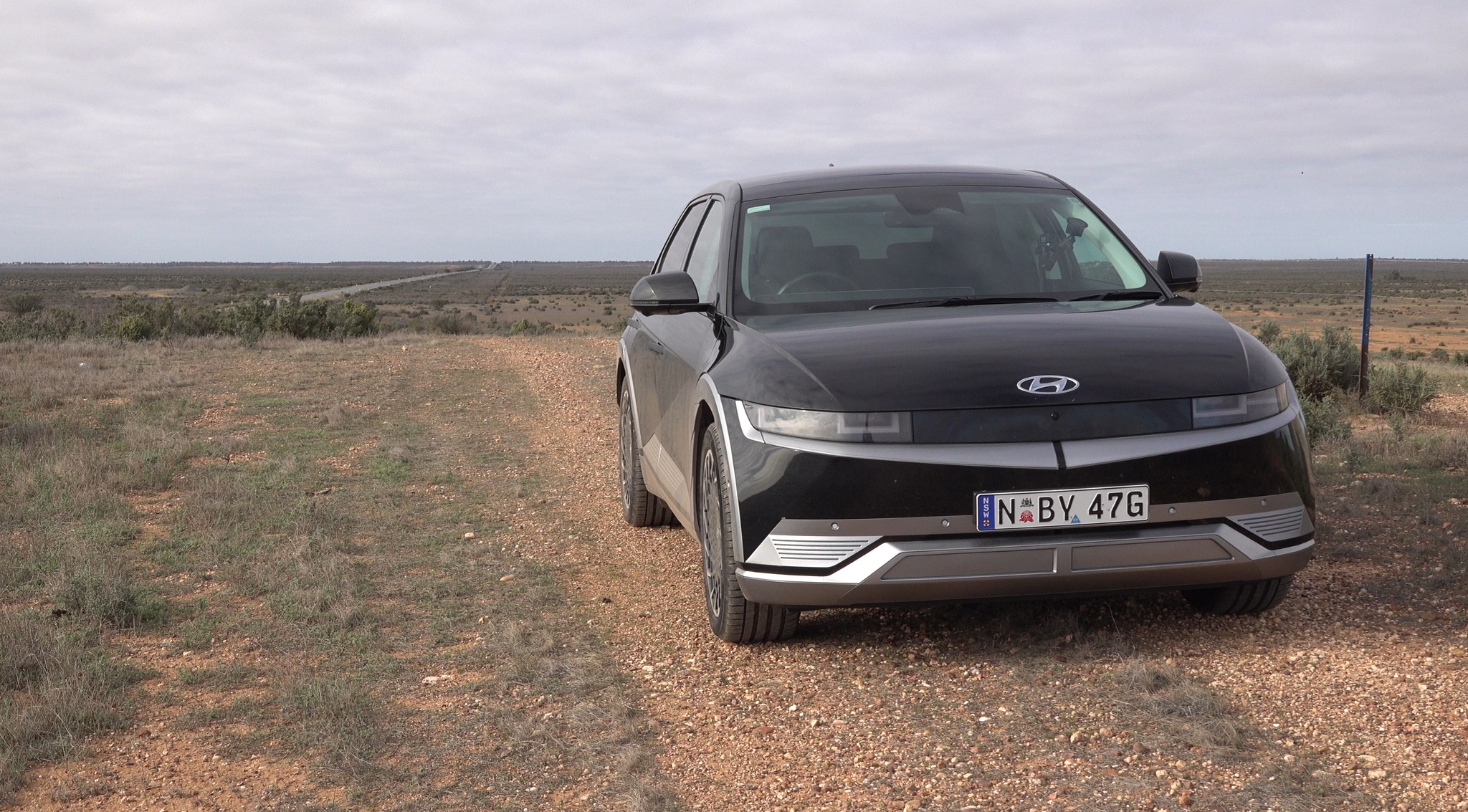
A brief guide to tyre pressures
I’ve noticed a lot of tyre pressure questions of late so here’s one article which hopefully answers them all. If missed any, comment below.
WHERE DO I FIND THE RIGHT TYRE PRESSURES FOR MY VEHICLE?
Your vehicle will have a tyre pressure placard on it, usually somewhere around the driver’s door jamb. It will specify tyre pressures, and these should be your guide as they have been worked out by the carmaker’s engineering team. The information will also appear in the owner’s manual. If in doubt, use those pressures – buy a quality gauge and check the pressures when the car is cold. The video below includes an example placard and how to use it, click to go direct to that section:
DO ALL VEHICLES RUN ABOUT THE SAME TYRE PRESSURE?
Absolutely not. Vehicles the size and weight of the truck shown in the picture might run 70psi or more in their tyres, the Jimny more like 27psi. The 4×4 world tends to think of medium-large 4x4s such as Pajeros, Prados, and LC200s and broadly these vehicles do run very similar pressures. But those rules do not scale up or down to the likes of trucks or Jimnys. Similarly, small and light sports cars run lower pressures than heavier sedans like Camrys. Again, let the placard be your guide.
SHOULD I VARY FROM THE PLACARD PRESSURE?
Possibly yes, depending on two main factors. First, if your vehicle is non-standard; for example, heavier than stock, or running significantly different tyres to standard. Second, what you’re doing with the vehicle. The placard pressures are for general bitumen road use and anything else may require different pressures.
There are many, many factors that determine the ‘right’ tyre pressure; weight on the tyre, speed of the vehicle, dimensions of the tyre, use of the vehicle, construction of the tyre and climate factors such as temperature and even whether it’s wet or dry, plus the nature of the terrain you are traversing, and how you are traversing that terrain. With all that complexity it is impossible to state hard and fast rules, just guidelines, so here’s some:
- the heavier the vehicle (more load on the tyre) the more the pressure required. This is critical.
- the faster you drive, the quicker the tyre deforms, and the greater the heat buildup, so the higher the pressure required.
- conversely, the lower the pressure, the slower you must drive. Another critical rule.
- the taller the tyre, the less the pressure required, and same for wider.
- heavy duty tyres, e.g. light-truck construction require a little more pressure than road tyres as they don’t dissipate heat as effectively.
That’s not even a comprehensive list. There is a lot to say about tyre pressures for 4×4 operation on different terrains and pressures such as deflating for sand; watch this for more.
IS THE RIGHT TYRE PRESSURE WRITTEN ON THE TYRE?
No. The only pressure there will be the max-inflate pressure with a load rating. You shouldn’t ever run a tyre to its maximum load so you’ll never need the max-inflate pressure. Tyre makers do not give recommended pressures, car makers do, and that is, say it with me, On…The…Placard!!!
SO WHAT IS THE RIGHT PRESSURE?
An increase of 2-3psi from cold pressures to hot for bitumen driving – and ‘hot’ means after 15m or so of running – is about right. The reason for the increase is the tyre deforming and generating heat. The more weight on the tyre, the more deformation, the higher the speed the faster the deformation.
A vehicle travelling at its GVM (max load) at 110km/h for hours on end during a hot summer day requires more pressure in its tyres than the same vehicle with a light load at 70km/h on a wintry, cool day.
The absolute perfect tyre pressure varies from minute to minute and metre to metre, so everything is an approximation.
If on a cold morning you check your tyre pressures, then leave your car in the sun and check again at midday you’ll find a pressure increase due to the heat. So not only does the perfect tyre pressure vary constantly, the actual tyre pressure varies according to factors other than vehicle use, such as ambient temperature!
WHY DOES THE PLACARD LIST MULTIPLE PRESSURES?
The carmaker typically lists two pressures; one for a normal load of maybe two people, and another for a heavy load which lists pressures maybe 1-4psi higher. There may also be different pressures for different tyre options.
IF MAX-INFLATE WRITTEN ON THE TYRE IS 50PSI FOR 2000KG, IS 25PSI for 1000KG OK?
No. The relationship between pressure and load is non-linear so that sort of maths won’t work. Read your placard.
DO MUD TYRES NEED TO BE RUN AT X PSI?
No. The pressure for the tyre is set by a function of the vehicle it is fitted to, the use of the vehicle especially speed and weight, and the nature of the tyre itself. You cannot look at a given tyre not fitted to a vehicle and determine the appropriate pressure for it.
DO TYRE SHOPS GIVE GOOD ADVICE ON TYRES?
Sad to say, but my inbox proves that tyre shops are not in fact reliable sources of advice on anything to do with tyres from fitment to inflation, with some notable exceptions. The worst offenders are definitely the national chains, independent specialist shops are likely to get things right.
Tyre shop staff seem to rely on hearsay instead of reading the actual road laws, and often contradict the laws of physics. I once presented on the subject of tyres to a set of dealers and asked “What’s the maximum legal increase in size for tyres in Victoria” and got four different answers, all delivered with confidence. Can’t all be right, can they! And there is a spate of setting Jimny tyres to insane pressures like 40psi, in one case “because it’s a mud tyre”. The list goes on.
WHY SHOULD I BELIEVE THIS ARTICLE?
I guess because I can justify everything I’ve said here either by explanation or reference to the appropriate documents, I’ve spent ages reading tyre textbooks, working with tyre engineers (not fitters), and I’ve got lots of experience across lots of different car operations including tyre testing. However, I still don’t know everything, and only write about what I know works.
IS IT ILLEGAL TO DEVIATE FROM THE PLACARD PRESSURES? WILL MY INSURANCE BE INVALIDATED?
No to both. There is no legislation that says vehicles must run exactly the placard pressure. If OldMate58 says there is, ask him to provide it and send me a copy. The reason no legislation exists is because tyre pressures are, as this post hopefully shows, very complex.
Similarly, your insurance PDS will not say anything about tyre pressures. It will certainly say something along the lines of refusing claims if your vehicle is “in an unsafe condition that caused or contributed to the incident” and you may also be denied if “your vehicle is not in good order and repair, free from rust, mechanical, hail or unrepaired damage, or any other damage that would make it unsafe”.
Now it is certainly the case that tyre pressures that are far too high or low could be said to be making the vehicle unsafe; for example, 15psi in a Prado driven on freeway. However, 15psi in soft sand is sensible, as is dropping to say 27psi for rough dirt roads, both of which are below placard pressures. So, varying from placard pressures doesn’t suddenly invalidate your insurance, provided you have good reason to do so. You can call your own insurance company and ask.
DO LOW PROFILES NEED HIGHER PRESSURES?
They are usually run slightly higher pressure in order to protect the rim.
WILL TOO MUCH PRESSURE DAMAGE MY TYRES?
Yes. They will wear in the centre and possibly damage the carcass, or crack the tyre. That’s assuming you’ve not bounced your way off the road and into hospital in the meantime. You also increase your risk of punctures. Your stopping distance will also be increased. Fuel consumption will decrease slightly. So what’s “too much pressure”? As usual, impossible to say, but if the placard is say 35psi and you run 50psi on a lightly-loaded standard vehicle, that’d be too much pressure. A few psi over placard isn’t over-inflated.
WILL TOO LITTLE PRESSURE DAMAGE MY TYRES?
Yes. They will overheat leading to blowouts. Your stopping distance will also be increased. Your ESC system may well start to go off in odd places. The tyre will wear on the sides near the sidewall. Handling will feel awful. You may hear tyre screeching and passenger screeching. Fuel consumption will increase. Life will not be good. Change your evil ways. You definitely don’t want to run under placard unless you are in a situation like a 4×4 in sand.
WHAT’S WORSE, OVER OR UNDER INFLATION?
Under-inflation is generally worse for the tyre, the car and your ongoing chances of not having an accident. So, if you’re not sure, err on the side of the higher pressure.
CAN I JUDGE THE RIGHT PRESSURE BY LOOKING AT THE TYRE?
No, otherwise we wouldn’t need tyre pressure gauges. However, if your vehicle’s tyres are entirely round, with no flat spot at the bottom, they are very likely to be over-inflated. And if the flat part looks longer than normal, then it’s probably under-inflated – at least for bitumen use, a 4×4 in sand is a different matter. You can only really notice extremes of over and under inflation. Fix both immediately!
SHOULD I RUN NITROGEN IN MY TYRES INSTEAD OF AIR?
You already run 78% nitrogen in your tyres. Unless you are running a vehicle which sees tyre temperatures that’ll boil water there is no need to worry about the other 22%. Nitrogen fills for roadcars are a scam – what works for extremely high-performance racing cars doesn’t always translate to humbler vehicles.
WHAT DO THOSE TYRE MARKINGS MEAN?
OK this is long enough, that’s a whole new subject of ratings and dimensions!


